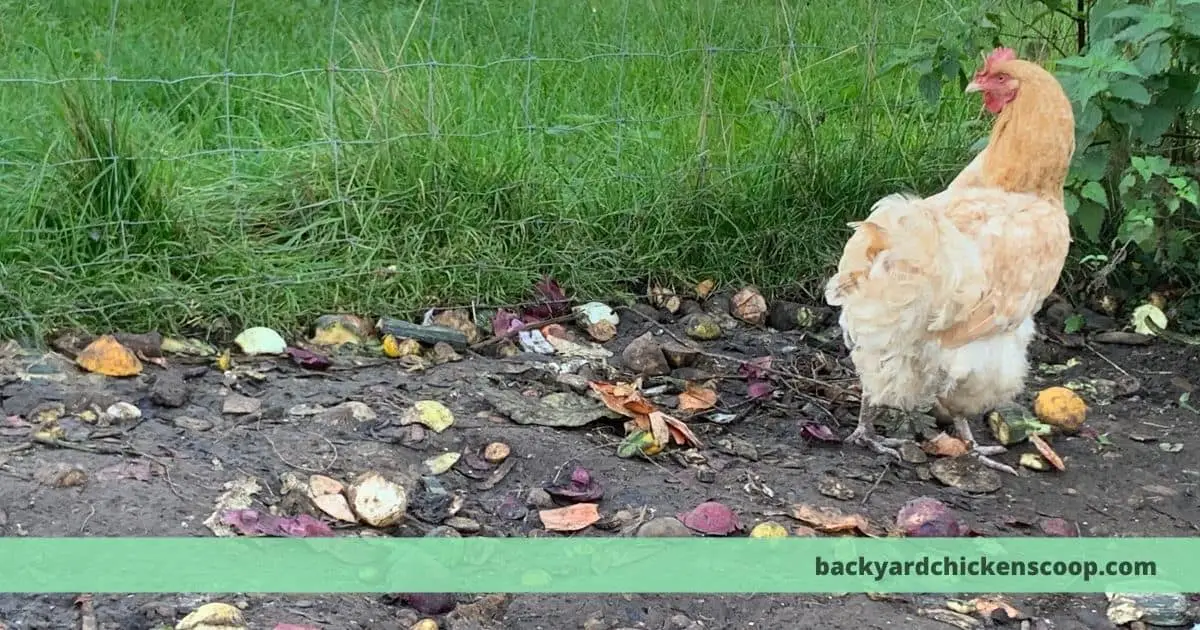Chickens are fascinating animals to study because they can be used as an example of many different things in biology. They are also one of the most popular pets around the world. In this article, I will elaborate on how chickens behave when it comes to pooping and peeing.
How Does a Chicken Urinate
Chickens, like all birds, do not urinate in the same way mammals do. Instead of having separate pathways for feces and urine, chickens (and birds in general) excrete both through a single opening called the cloaca. Here’s a simplified explanation of their process:
- Kidneys: Chickens have kidneys that filter waste from the blood. However, instead of producing liquid urine like mammals, their kidneys produce a semi-solid waste. This is because birds have a higher need for efficiency in water conservation, a trait especially important for flying species and those living in arid environments.
- Uric Acid: The main nitrogenous waste in chickens is uric acid, not urea like in humans and many other mammals. Uric acid is less toxic than urea and can be concentrated in a paste-like form, minimizing the loss of water. This is why the “urine” of chickens is white and pasty. It’s uric acid mixed with feces, as both are expelled together.
- Cloaca: The cloaca is a multi-purpose opening in birds that is used for excretion and reproduction. Both the digestive and urinary waste products merge in the cloaca and are expelled together through the vent, the external part of the cloaca.
- Water Conservation: This system of excretion is highly efficient in terms of water conservation. The uric acid paste is expelled along with the feces, which means chickens do not need to drink as much water as mammals that excrete diluted urine.
- Excretion Frequency: Chickens excrete frequently, as their metabolism is high to support their body temperature and activity levels. The consistency and color of their droppings can vary based on their diet and hydration levels.
In summary, chickens don’t urinate in the mammalian sense. Instead, they excrete a combination of faeces and uric acid through the cloaca, an efficient process that conserves water and eliminates waste. This is a common trait among birds and some reptiles, contrasting with the urinary systems of mammals.
Do Chickens Urinate Through Their Skins?
No! Chicken does not have sweat glands responsible for producing moisture allowing them to get waste products, or ‘urinate’ through the skin. Instead, they have kidneys liable for producing uric acid crystals removed via the vent or cloaca.
How Often Do Chickens Poop and Pee?
Chickens usually poop and pee every 30 minutes but sometimes more frequently than once per hour. It depends on what kind of food they eat and whether they are stressed out.
For instance, if they are fed with dry feed, they may need to go twice daily. If they are given wet food, they might require going several times a day. Also, some breeds of chickens tend to produce fewer feces compared to others.
Some breeds even don’t make any feces at all.
You might also like my article on random stuff people ask about chickens. Like, how do chickens get pregnant?
Do Chickens Have a Bladder?
No. Chickens do not have a bladder. However, there is something called a “vent” located between the anus and genitals. When chickens defecate, the fecal matter passes through the vent and exits the bird’s rear end.
There is no way to stop the flow of feces except by cutting off the vent. So, yes, chickens do pee and poop through the same opening.
Read more about vent gleet here…
Do Chickens Pee and Poop From the Same Hole?
Yes! Poop, eggs, and pee come out of the same hole. Chickens’ digestive system works differently from ours, and all water products are emptied out of the common opening called the cloaca.
Their intestines are divided into three parts; small intestine, large intestine, and rectum. Each part has its own function. The small intestine absorbs nutrients while the large intestine helps break down undigested material. The rectum collects feces and sends them to the cloaca. Cloacae is the common name for the vent.
Do Chickens Poop and Pee at the Same Time?
Yes! Chicken do both pee and poop at the same time as both are emptied out through the common opening called the cloaca. Usually, after eating, chickens first pass gas and then start passing stool.
Sometimes, however, they just pass gas without having anything else to expel.
What Are the Benefits of Chicken Not Producing Liquid Urine?
I love learning more about evolution and finding out why some animals behave in certain ways. One thing I learned about chickens is that they do not produce liquid urine. Why eliminate liquid urine? Here are three reasons.
- Liquid urine contains ammonia which is toxic to bacteria living inside the body.
- Urine is acidic and causes damage to the lining of the urinary tract.
- Helps chicken stay lighter. Therefore, eliminating liquid urine prevents these problems.
1. Ammonia Toxicity
Ammonia is produced naturally by our bodies during digestion. Our livers convert amino acids into ammonium ions. These ions combine with hydrogen ions to form ammonium hydroxide. Then, this mixture travels to the kidney, where it gets rid of excess ammonia.
But when chickens drink too much water, their kidneys cannot filter enough ammonia because they lack a bladder. As a result, chickens get sick due to high levels of ammonia in their systems. To prevent this problem, chickens should be provided with adequate amounts of calcium and vitamin D3.
They also need access to fresh air as well as clean drinking water.
2. Acidic Environment Damages the Urethra
When chickens urinate, they release acid waste products such as carbon dioxide and bile salts. This creates an acidic environment around the urethral opening.
The pH level of the urethra can reach 3.5. In humans, the normal pH range is 7.0 – 8.4. A lower pH means higher acidity. If the pH drops below 5.5, the urethra will become damaged. It may even cause permanent injury if left untreated.
3. Helps Chicken Stay Lighter
Typically, Liquid urine is heavy. Because chickens don’t have bladders, they must hold on to liquids until they’re ready to excrete them. That makes them heavier than other birds who have bladders. By eliminating liquid urine, chickens lose weight faster.
How to Prevent Problems in Chicken Urinating?
You can avoid chicken urinating via the following solution.
1. Monitor High Protein Diets
Usually, a high protein diet leads to excessive production of nitrogenous wastes. When your chickens eat lots of proteins, they tend to make more ammonia. Too much ammonia can lead to serious health issues like liver disease, respiratory infections, and diarrhea.
So you should monitor how many calories each bird eats per day. You can use feed scales to measure food intake accurately. Also, keep an eye on the amount of litter your hens lay daily.
2. Provide Enough Water
Chickens require plenty of water to maintain good health. Water helps regulate internal temperature and keeps blood circulating properly throughout the body. Without a proper water supply, chickens’ metabolism slows down, causing dehydration. Dehydration can affect the immune system making chickens vulnerable to diseases. Make sure your chickens always have access to fresh water.
3. Feed Appropriate Diets
Chickens usually consume less than 10% of their total energy requirements from dietary fiber. Dietary fibers help reduce intestinal gas formation and improve nutrient absorption. Fibre also promotes healthy gut flora.
However, most commercial poultry feeds contain very little dietary fiber. Therefore, you should provide your chickens with foods that are rich in dietary fiber. For example, wheat bran contains about 20 grams of dietary fiber per 100-gram serving.
Conclusion
In a nutshell, chickens produce both solid and liquid feces. Solid fecal matter consists mostly of undigested plant material, while liquid fecal matter includes bacteria, enzymes, hormones, vitamins, minerals, and electrolytes. Chickens eliminate these materials using two different methods.
First, they pass solid feces out of their digestive tract without any assistance. Second, they push liquid feces out of their rectum using muscular contractions called defecation. Both types of elimination occur simultaneously when chickens need to poop and/or pee.


